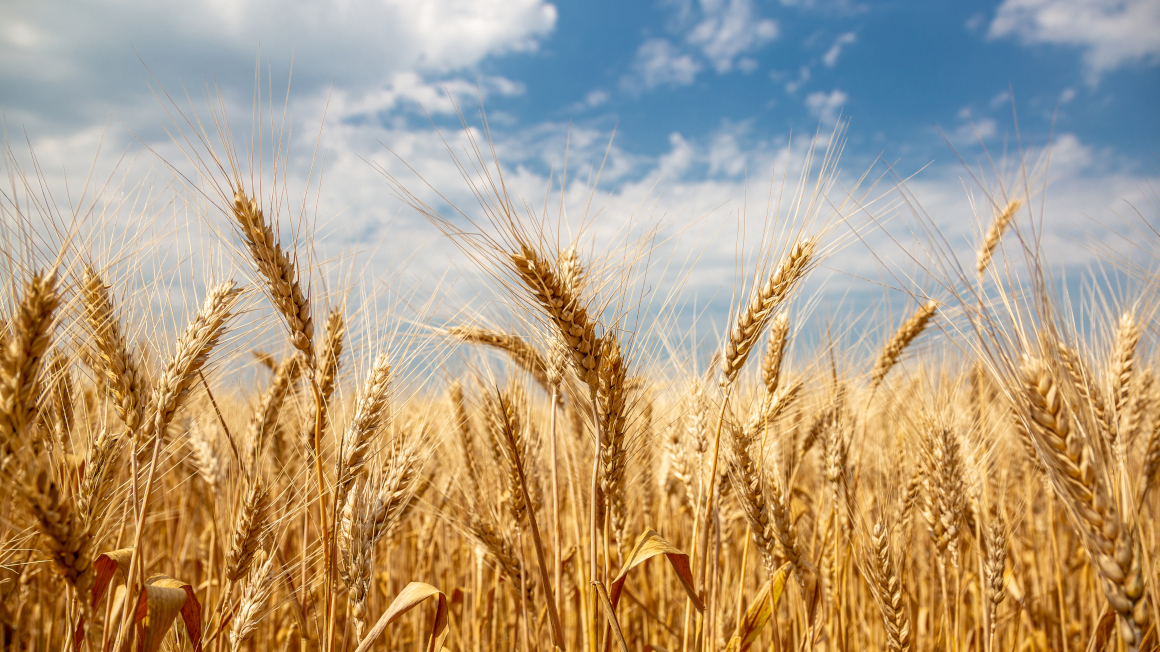“Bioinformatics can make agriculture more sustainable”
Agnieszka GoliczProfession:
Molecular geneticist and bioinformatician (PhD)
Position:
LOEWE Start Professorship for Bioinformatics at the Justus-Liebig-University Giessen

Profession:
Molecular geneticist and bioinformatician (PhD)
Position:
LOEWE Start Professorship for Bioinformatics at the Justus-Liebig-University Giessen

Agnieszka Golicz uses "big data" for the genome-based improvement of crops.
Agriculture must adapt to the challenges of climate change in order to secure the supply of important food crops such as cereals in the future. Agnieszka Golicz from Justus Liebig University Giessen is convinced that bioinformatics can provide a crucial contribution. After all, the ability of crops to adapt to climate change is already anchored in their genome, says the molecular geneticist. In her research, she uses bioinformatics methods to analyze genome sequences. Using this data, Golicz is investigating how the plant genome is organized and how this affects gene expression and the characteristics of the plant. As part of a LOEWE start-up professorship, she has been leading a junior research group since October, which will use big data to investigate a wide range of variations in the genome of crop plants and their effects on important traits such as stress tolerance or disease resistance over the coming years.
How can bioinformatics make agricultural production more sustainable?
Bioinformatics can play a crucial role in making agricultural production more sustainable by using complex computational and modeling methods to analyze biological data. By integrating diverse biological data, bioinformatics enables data-driven decision making in agriculture. Farmers can use this information in every step of crop production; from choosing which variety to plant to optimal crop management practices, reducing overall environmental impact while maximizing productivity.
What role does knowledge of the plant genome and genome organization play in light of the challenges of climate change?
The ability of crops to withstand the more challenging environmental conditions caused by climate change is to a large extent already anchored in their genome and its organization. Bioinformatics allows this genomic data to be analyzed, leading to the identification of genes or genomic regions associated with desirable traits such as disease resistance, drought tolerance and high yield. This knowledge then enables breeders to predict the performance of plants or animals based on their genetic makeup, leading to more targeted and efficient breeding programs.
One focus of your research work is the use of big data for the genome-based improvement of crops. How can plant production benefit from big data and what role does artificial intelligence play in this?
Big data and artificial intelligence (AI) play an important role in revolutionizing crop production, not only by providing significant amounts of specific key information, but also by enabling its analysis and interpretation. In particular, AI is already being applied - from pattern recognition to performance prediction - to speed up the processing of complex and/or large data sets. The combination of big data and AI will provide researchers, breeders and farmers with tools to optimize every step of crop production, improve precision agriculture practices and contribute to the development of more resilient and sustainable farming systems.
Your most recent research success was the sequencing of the giant genome of the broad bean, in which you were involved as part of an international research consortium.
How important was the genome-based data analysis here and what new insights were gained as a result?
Our research focuses on genome-based data analysis. The broad bean has always been an ideal candidate among cool-season legumes to serve as a source of plant proteins. However, its enormous genome size (with 13 billion base pairs, one of each of these chromosomes being larger than the entire human genome) significantly hampers its inclusion in modern breeding efforts, as these rely heavily on the availability of genomic resources. Our collaborative efforts, combined with the latest sequencing technologies, resulted in a chromosome-level genome assembly that was then used to identify the genetic determinants of seed size and hilum color differences between varieties.
As part of your professorship in agricultural bioinformatics, you head a junior research group at JLU.
What is the junior research group researching and what is the aim of the research?
Our research group is funded by the state of Hesse as part of a LOEWE start-up professorship and specializes in crop bioinformatics with a focus on genomics and pangenomics. We use a wide range of informatic-analytical methods to investigate the genome variations occurring in crop plants and thus analyze their effects on gene expression and also on agronomic traits such as stress tolerance, disease resistance and yield changes.
Interview: Beatrix Boldt


